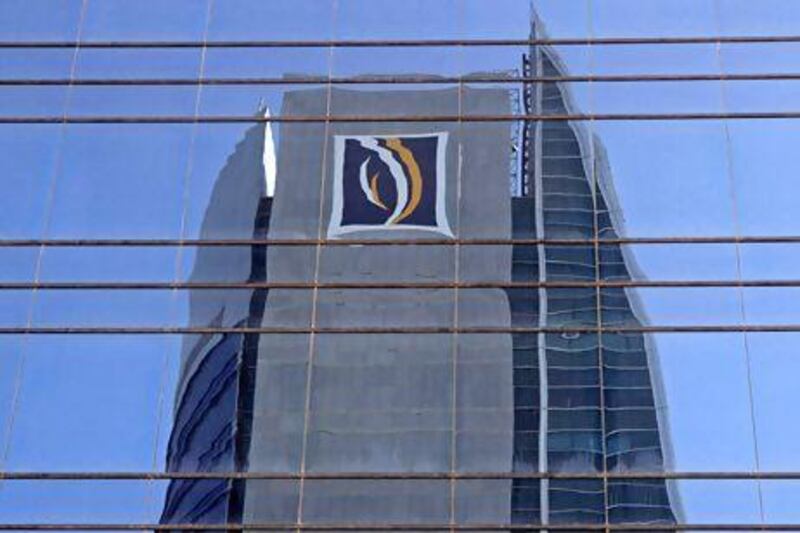Three of Dubai's top banks have had their credit ratings downgraded as Moody's sounded a note of caution on the recovery of the sector.
The ratings agency downgraded Emirates NBD, the country's biggest bank by assets and two other lenders because of worries about a build-up of bad loans.
Emirates NBD and Commercial Bank of Dubai both had their long-term ratings trimmed by one notch to Baa1 from A3. The long-term rating of Mashreq was lowered one notch to Baa2 from Baa1. The trio were all given a negative outlook.
A fourth lender, Dubai Islamic Bank, was placed under review for possible downgrade.
Moody's move is a reminder that problems still beset Dubai's financial sector even as signs emerge of recovery in other key parts of the economy from the 2009 global financial crisis. Official data shows the emirate's economy grew 4.1 per cent in the first six months of the year, putting Dubai on course for its highest annual GDP expansion in five years.
"Despite an improvement in the overall operating environment in Dubai, especially in the core sectors of trade, retail, tourism and transport, Moody's believes that Dubai-based banks continue to face persistent asset quality pressures, which emerged at the start of the crisis four years ago," analysts at the ratings agency wrote in a report, released late on Thursday.
It pointed to elevated levels of non-performing loans of between 15 and 17 per cent as of the end of last year. Such levels were well above the average of GCC banks at 6.1 per cent.
Low levels of loan loss coverage were another factor cited by Moody's. Despite significant improvement in the emirate's local operating environment, the loan figures were "persistently weaker" than regional and global peers with similar credit assessments.
It warned problem loan levels would remain elevated over the coming quarters, driven by exposure to large, stressed, government-related issuers restructuring debt.
The emirate's stable of companies are refinancing billions of dollars in debt, with almost US$50 billion (Dh183.66bn) of restructurings due between 2014 and 2016.
In the shorter-term, Emirates NBD is among lenders in negotiations with Dubai Group about restructuring $6bn of debt. It said in July it had put aside 32 per cent of the value of Dubai Group's loans, or Dh1.47bn to guard against losses from the process.
"During the global financial crisis banks grew their asset base way too quickly and their loan to deposit ratios accelerated above 100 per cent," said a banking analyst who asked to remain anonymous. "Banks have now been trying to deleverage for the past two years but they still have some way to go."
Moody's said the banks were also still grappling with a hangover from the property market downturn. Moody's cited reductions in banks' capital, mainly property market-related, which are still emerging after failed attempts to restructure speculative property financings underwritten earlier in the crisis.
Much of this lending was financed on the basis of very optimistic projections of cash flows and capital gains that were unlikely to return in the near-term, particularly in the commercial property market, it said.
"The delayed recognition of these problem loans is continuing to pressure asset quality of the affected banks," analysts wrote.
"While much of the exposure is likely to be collateralised by property, their reduced valuations and a protracted enforcement process limit the upside of any recovery process."
It also noted that some of the banks' non-performing loans did not include significant restructured debts that other lenders deemed as impaired. As a result, they may present significant future risks, it warned.
Non-performing loans have continued to provide a drag on banks earnings since 2009. The continuing need for banks to set aside provisions to cover bad loans has been cited as a major reason for the sluggishness in bank lending. Bank lending rose 3.2 per cent in August from a year earlier, about a fifth of the level in Saudi Arabia, Central Bank data shows.





